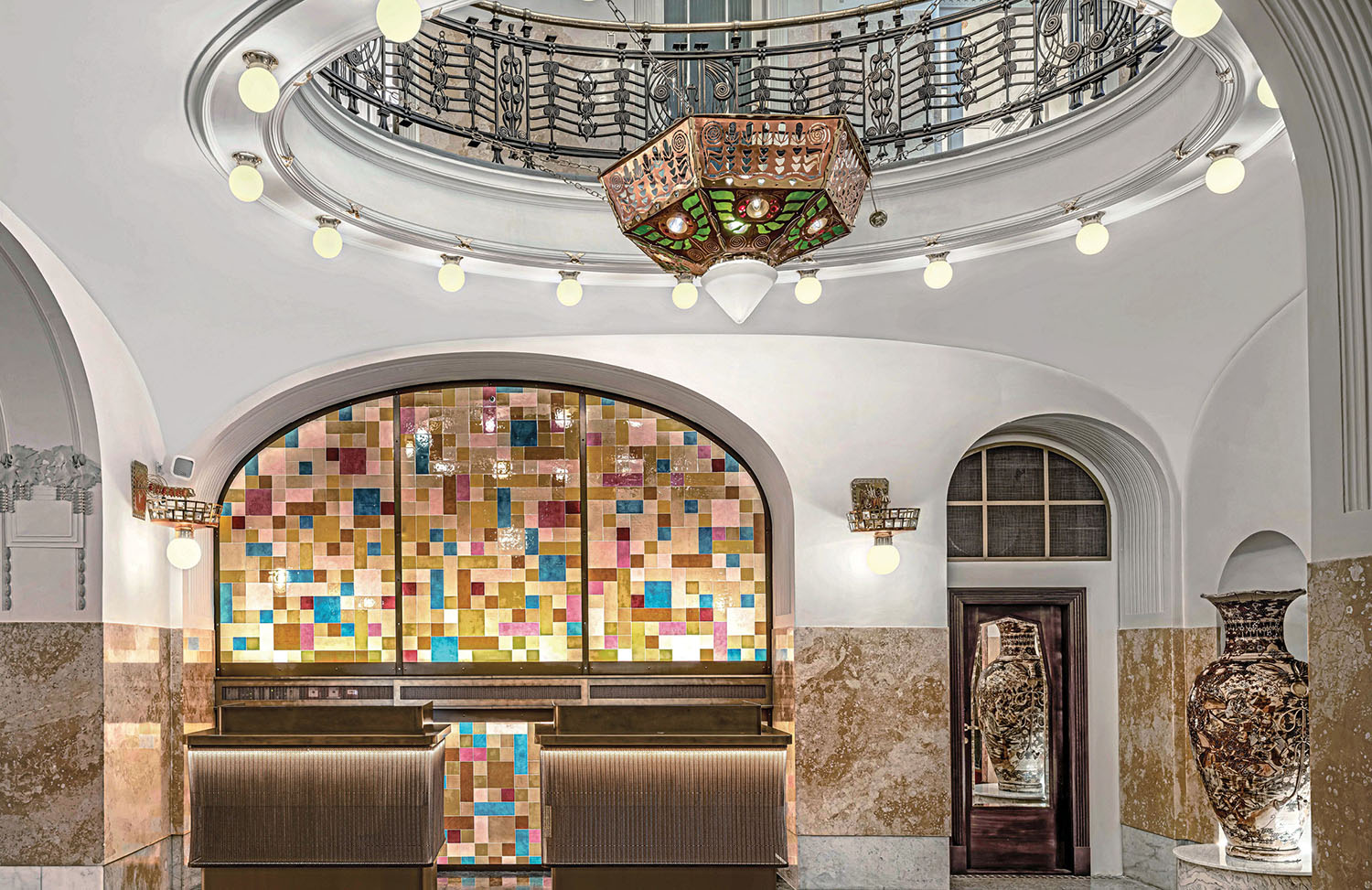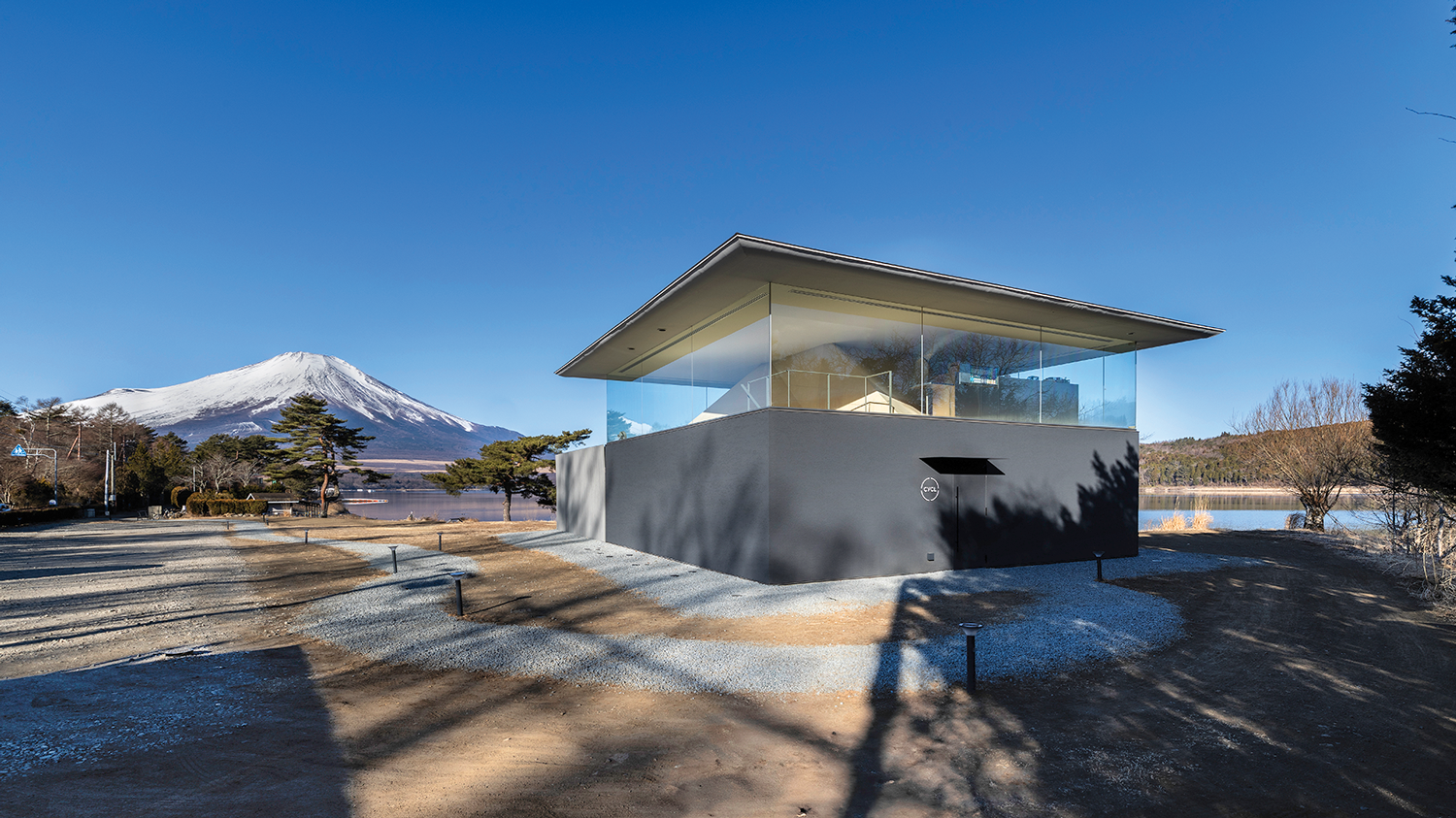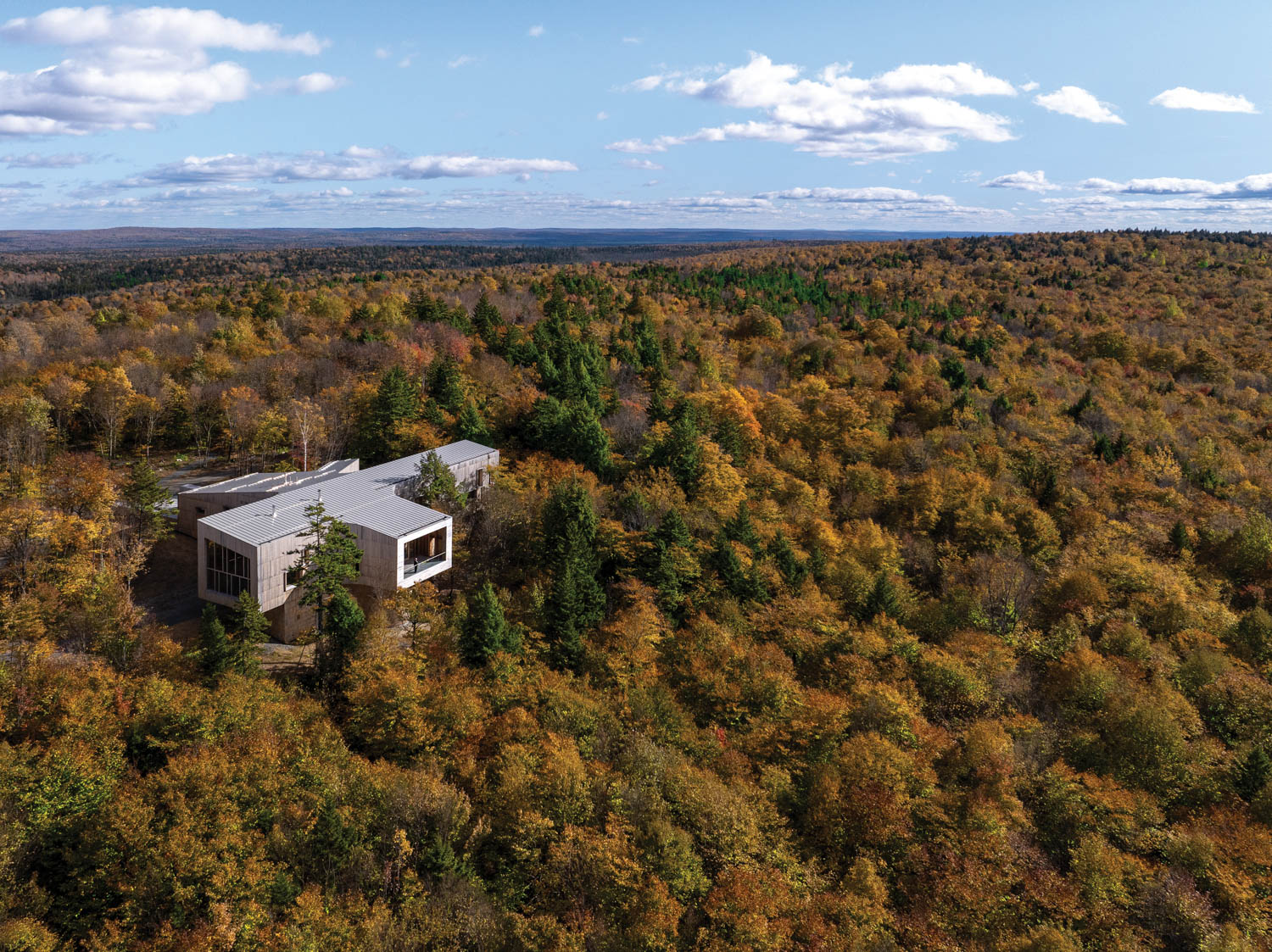Radical Botanical: Ply Architecture Constructs A Pavilion At The Matthaei Botanical Gardens
What a difference a client makes. When Ply Architecture, designing a yogurt shop in Ann Arbor, Michigan, proposed a ceiling of geometric forms made from sheet metal, principal Karl Daubmann got “no” for an answer. When he was then awarded one of the first Research Through Making grants from the University of Michigan, where he’s also a professor, he returned to that concept, even though he had only a vague notion of the outcome. Could a lightweight material transform into a visually complex yet self-supporting structure? Mock-ups suggested so—he had interns cut and roll paper into truncated cones and organize them in a dense field. However, he says, “There came a point when we were just building model after model, with no idea better or worse than the other.”
That’s when the associate curator of the university’s Matthaei Botanical Gardens, David Michener—an occasional guest in Daubmann’s student studio reviews—offered the 700-acre property to host a pavilion. He also suggested that the cones could be packed according to phyllotaxis, a term describing the way leaves are arranged in a spiral around a stem. “It was useful to have some specifics to respond to,” Daubmann continues. With two former graduate students, he designed an elliptical structure with an asymmetrically placed oculus to frame a prairie vista. To construct the 500-square-foot pavilion, they laser-cut 18-gauge aluminum sheets and riveted the resulting segments into cones of 11 sizes as determined by digital parametric modeling and old-fashioned trial and error. Phyllotaxis partially determined how groups of cones were riveted to one another; these modules were in turn riveted together on-site.
So far, nature has taken kindly to the ongoing experiment that is Shadow Pavilion. “The raw aluminum picks up all the colors of the surroundings,” Daubmann says, going on to liken the installation to dozens of megaphones. “In the summer and fall, you heard all the grass and the leaves and the birds.” And temporary braces helped the paper-thin metal endure the first big blizzard’s 6 inches of snow.
Images courtesy of Ply Architecture.


